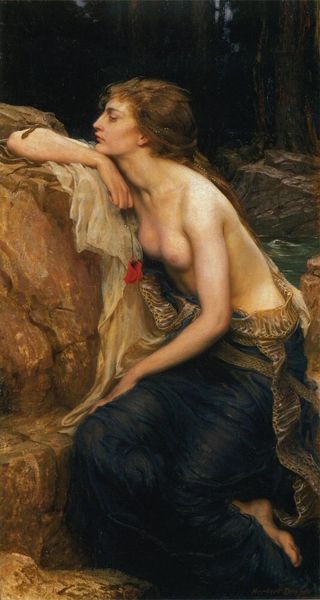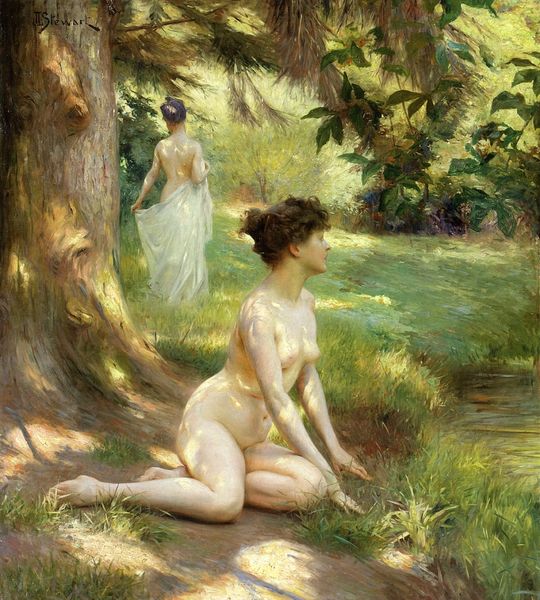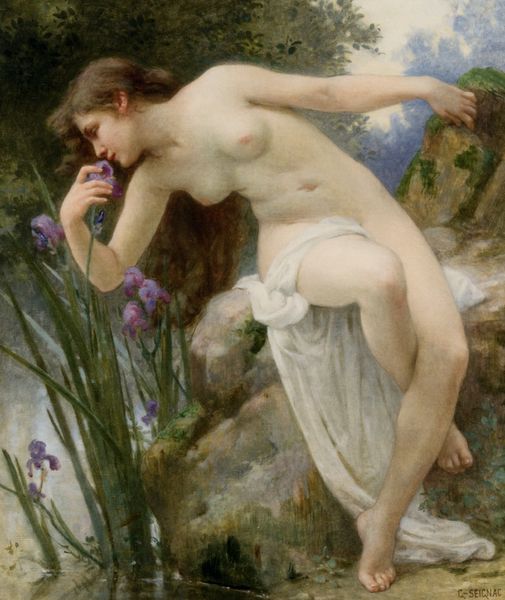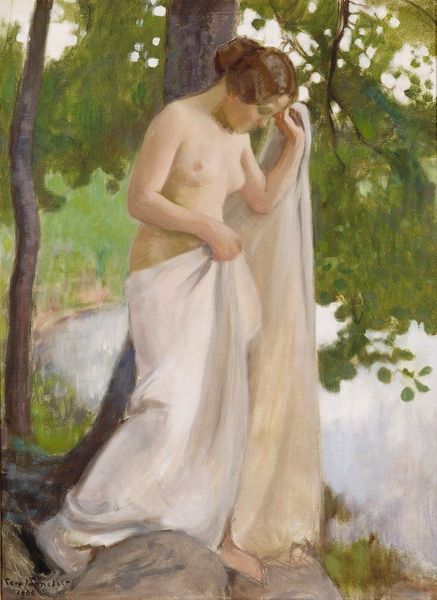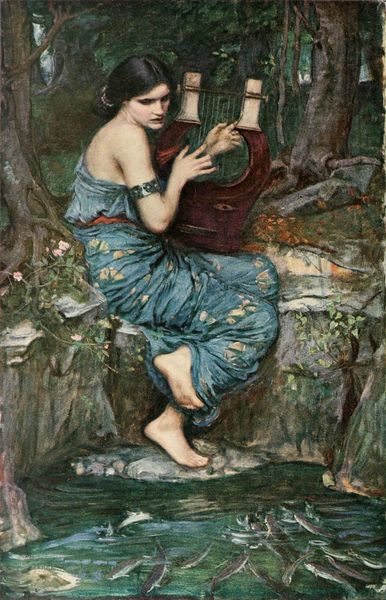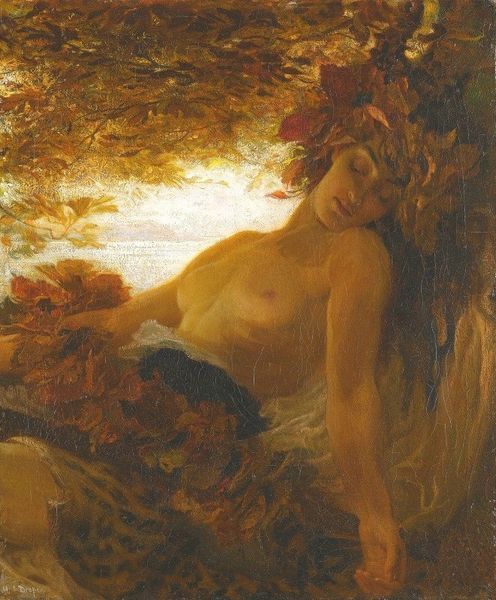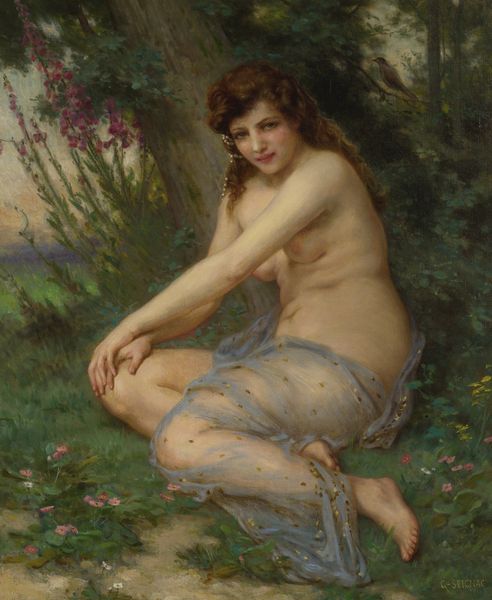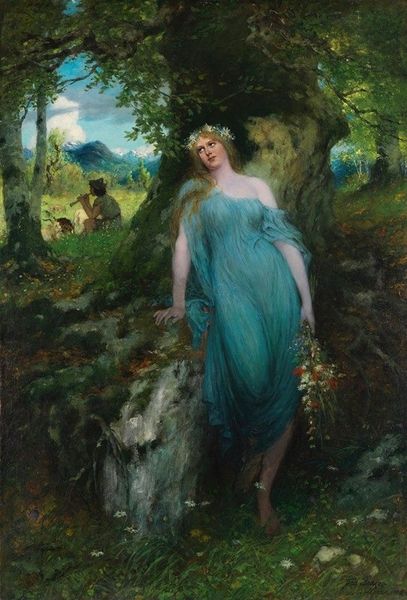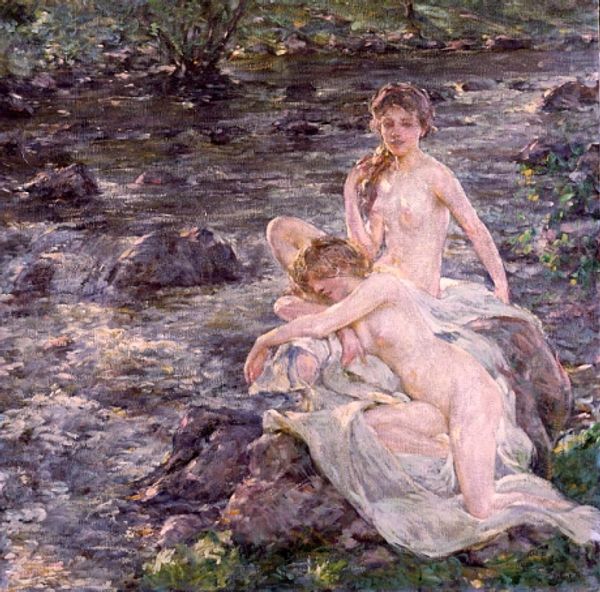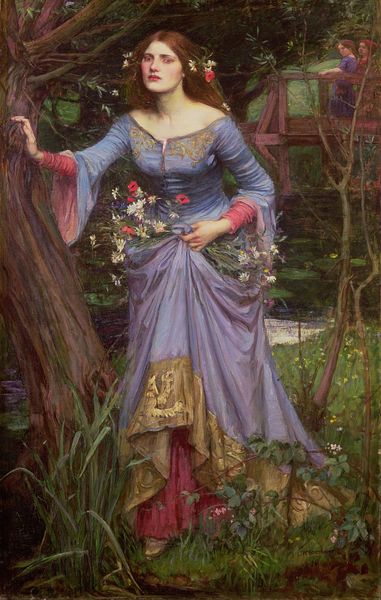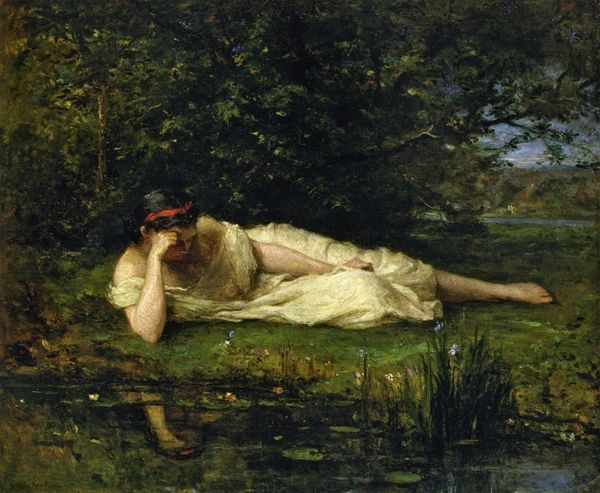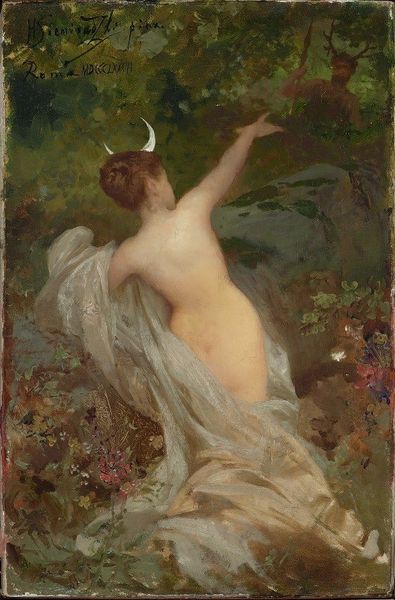
Copyright: Public domain
Curator: Here we have John William Waterhouse's "Lamia," created in 1909. The artist employs oil paint to bring this vision to life. Editor: It’s evocative… the woman’s pose, combined with the dim light filtering through the trees, creates a rather contemplative mood. Curator: Absolutely. I find it compelling to consider how Waterhouse constructs this image, layer by layer. He doesn't simply paint a scene; he's orchestrating an experience. Notice the cascade of her hair, rendered with painstaking detail to simulate textures that would require numerous workers. Then observe the materiality of her shawl with its rich decoration that contrasts her simplicity, highlighting consumption through artistic production. Editor: Lamia herself, as a figure from Greek mythology, holds potent symbolism. The snake embodies transformation, tempting desires, and ultimately, illusions that often come at a painful cost. She's caught between worlds, mortal and divine. Her bare feet hover over the pond which could speak to introspection, even a baptism as if she could become transformed when looking to her own reflection. Curator: The choice of oil paint as the medium allows Waterhouse to achieve that remarkable luminosity in the woman's skin and in the water. Oil allows for blending and glazing that captures light in ways that other media struggle to replicate. And also consider the production of these pigments in the early 20th century. It was far different from modern ready made products. Editor: Indeed. And let’s not forget the persistent archetype of female power associated with her—a figure whose beauty is as enchanting as it is dangerous, drawing deeply from our collective unconscious about allure and peril. Her reflection shimmers not unlike memories from dreams, haunting echoes from an older consciousness. Curator: Exactly. It’s the careful juxtaposition of material techniques— the play between the controlled execution and romantic subject matter—that truly makes this piece resonate. The oil on canvas isn't just paint and cloth; it's a cultural artifact, a testament to early 20th-century artistic priorities and industrial innovations shaping beauty. Editor: A potent image steeped in symbolism. We observe the beauty that can become associated with danger if left unwatched. Curator: I would agree; reflecting on this interplay reveals how visual narratives are never detached from the conditions of their making.
Comments
No comments
Be the first to comment and join the conversation on the ultimate creative platform.
